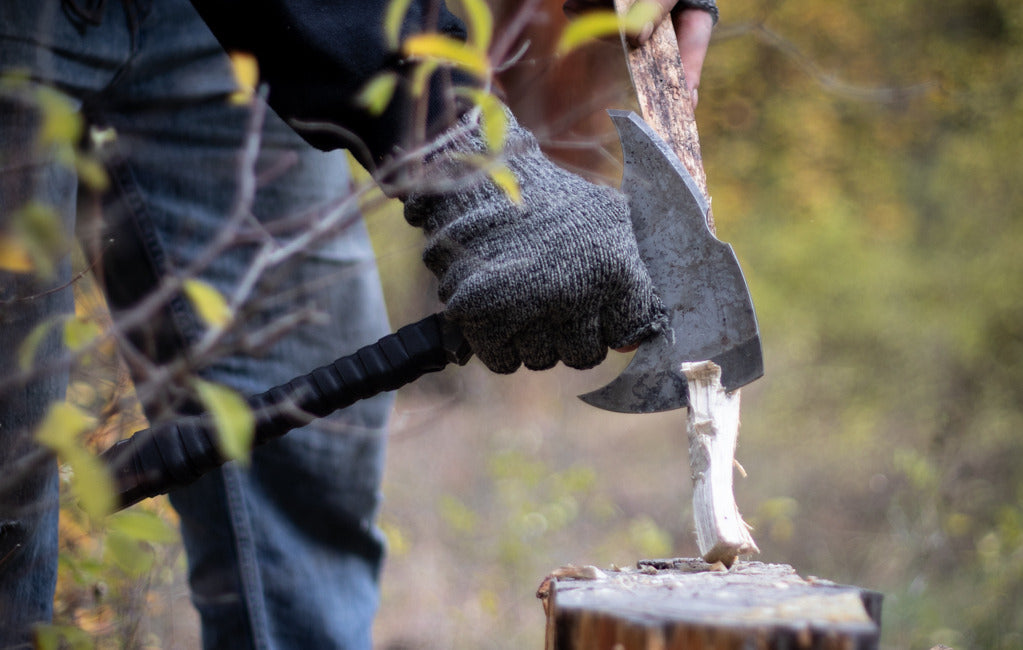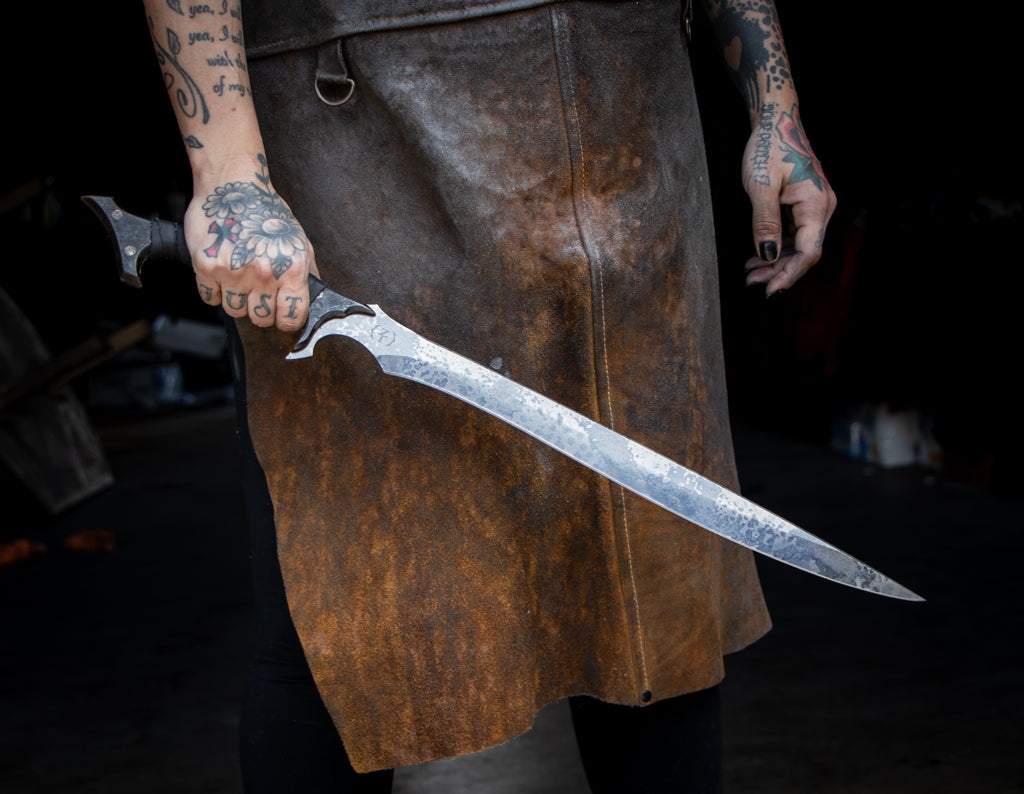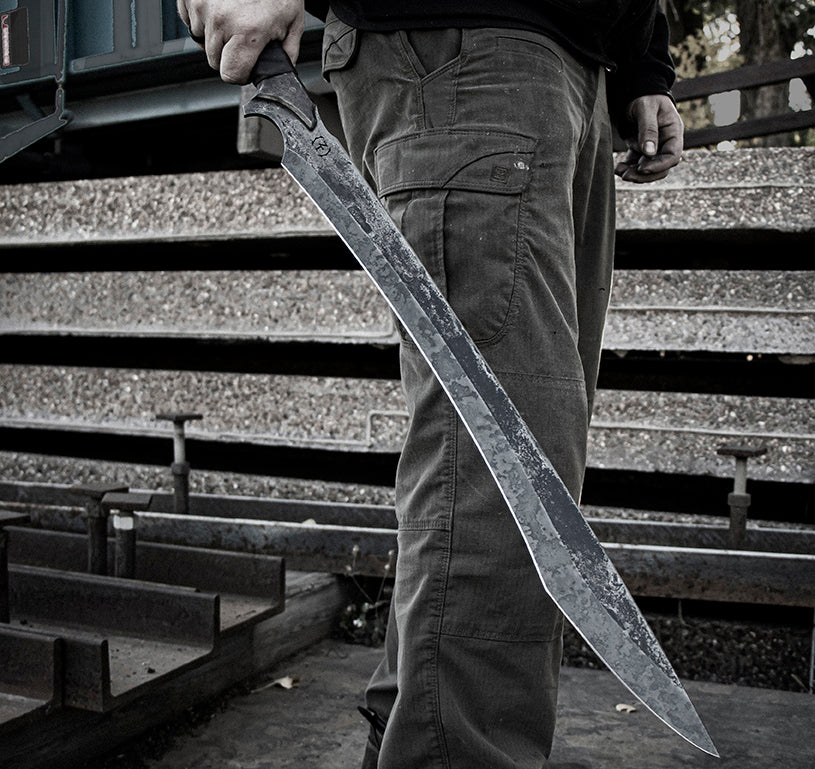Types of Axes: From Work Tools to Combat Weapons

At a Glance: Axes fall into three main categories that reflect centuries of tool evolution and specialized design. Work axes handle forestry and carpentry tasks, combat and historical axes carry forward warfare traditions through bearded edges and tactical designs, and specialty axes serve modern tactical, rescue, and recreational uses.
Understanding these different types of axes helps you select the right tool for any job. Whether you're splitting wood, studying historical weapons, or preparing for outdoor activities, each axe design offers unique advantages built through generations of refinement. The anatomy of an axe includes the axe head, axe handle, and sharp edge, with variations in handle length, blade geometry, and weight distribution creating tools optimized for specific tasks.
Modern axes benefit from advances in metallurgy and handle materials, but the fundamental principles remain unchanged. A sharp blade, focused through proper technique, multiplies human strength to accomplish tasks impossible with other tools. The versatile tool concept means many axes serve multiple purposes, though specialized designs excel in their intended applications.
Types of Work Axes
Work axes represent the backbone of forestry and carpentry operations. These tools prioritize function over form, with each design solving specific challenges in wood processing and construction work.

Felling Axe: The heavy-duty choice for bringing down large trees. Features a thin, sharp blade with a long handle that generates maximum cutting power through leverage and momentum.
Splitting Maul: Built specifically for turning logs into smaller pieces. The thick, wedge-shaped head drives through wood grain while the substantial weight provides splitting force without requiring perfect technique.
Carpenter's Axe: A precision instrument for detailed woodworking. The shorter handle allows controlled cuts, while the beveled edge creates clean finishes on beams and joints.
Hatchet: The versatile tool for one-handed operation. Perfect for kindling preparation, small branches, and camping tasks where portability matters more than raw power.
Broad Axe: Specialized for hewing beams from rough logs. The wide, flat blade removes material in thin, controlled shavings to create smooth surfaces.
Hudson Bay Axe: A medium-sized axe that balances portability with cutting ability. Popular among outdoors enthusiasts who need more power than a hatchet but less bulk than a felling axe.
Mattock: A versatile digging and chopping tool with a dual head—one side for cutting roots, the other for breaking soil. Its balance and durability make it ideal for clearing ground and preparing tough terrain.
Pickaxe: Designed for breaking hard surfaces like rocky soil and compacted ground. The pointed ends concentrate force, allowing you to chip, split, and pry where other tools can’t.
Double Bit Axe: Features cutting edges on both sides of the head. One edge stays razor-sharp for clean cuts while the other handles rougher work, making it an efficient choice for extended forestry operations.
These work axes share common design principles: sharp edges for clean cuts, balanced weight distribution for sustained use, and wooden handles that absorb shock while providing a secure grip. The right axe depends on your specific tasks and physical requirements. Handle materials range from traditional hickory wood to modern composites, each offering different advantages in durability, shock absorption, and weather resistance.
Types of Combat and Historical Axes
Combat axes evolved alongside warfare tactics and metallurgical advances. These weapons balanced cutting power with battlefield maneuverability, creating designs that influenced both military history and modern tactical tools.

Viking Axe: The iconic bearded axe design that dominated medieval battlefields. The extended lower edge provided hooking capabilities while maintaining a sharp cutting surface.
Battle Axe: Generic term covering various military axes throughout history. These weapons emphasized reach and armor penetration over wood-cutting efficiency.
Tomahawk: Native American design featuring a light, balanced head perfect for both combat and utility work. The compact size allowed easy carrying and quick deployment.
Dane Axe: A long-handled two-handed weapon that gave infantry reach advantages against mounted opponents. The narrow blade concentrated force for maximum penetration.
Bardiche: Polearm featuring a massive curved blade that could slash like a sword or chop like an axe. Popular in Eastern European armies for its versatility.
Throwing Axe: Balanced specifically for accurate flight patterns. Modern sport versions maintain historical proportions while using contemporary materials.
Executioner's Axe: Ceremonial weapon designed for single, decisive cuts. The broad, heavy head ensured reliable performance in formal proceedings.
Halberd: A combined axe, spear, and hook weapon that dominated medieval battlefields. The versatile design allowed infantry to counter both mounted and foot soldiers effectively.
Combat axes required different priorities than work tools. Weight distribution favored quick recovery between strikes. Handle length provided reach while maintaining control. Sharp blade geometry focused on penetrating armor and causing maximum damage rather than clean wood cuts. The transition from the Middle Ages to modern warfare saw these designs evolve into ceremonial pieces and sporting equipment, though their tactical principles remain sound.
Types of Specialty Axes
Modern specialty axes adapt traditional designs for contemporary needs. These tools incorporate advanced materials, ergonomic improvements, and multi-functional features that expand beyond simple cutting tasks.

Tactical Axe: Military and law enforcement tool combining cutting capability with breaching functions. Compact design fits standard gear while providing maximum utility in emergency situations.
Firefighter's Axe: Purpose-built for rescue operations and structural breaching. The pick end penetrates materials while the axe blade cuts through obstacles during emergency response.
Ice Axe: A Mountaineering safety tool designed for climbing and fall arrest. The curved pick bites into ice while the adze shapes steps and platforms.
Survival Multi-Tool Axe: A Compact outdoor tool integrating multiple functions. These designs balance cutting ability with portability for backcountry and emergency preparedness.
Rescue Axe: Vehicle extrication tool built for breaking glass and cutting through barriers. The specialized head design prioritizes safety and efficiency in accident response.
Camping Axe: Lightweight outdoor tool optimized for recreational use. The shorter handle and reduced weight make extended use comfortable while maintaining adequate cutting power.
Roofing Axe: Specialized construction tool with a straight edge for cutting shingles and a gauge for measuring exposure. The compact size allows work in tight spaces while maintaining cutting accuracy.
Specialty axes demonstrate how traditional concepts adapt to modern requirements. Advanced steel alloys provide superior edge retention compared to historical carbon steel. Synthetic handles offer weather resistance and a consistent grip in conditions that would compromise wooden handles. Modular designs allow customization for specific applications while maintaining the fundamental efficiency of axe mechanics.
The evolution from simple hand axes to complex multi-tools shows how basic cutting principles scale to meet diverse needs. Modern manufacturing techniques create tools with precision impossible in earlier eras, while computer modeling optimizes weight distribution and blade geometry for specific applications.
Zombie Tools: Modern Combat-Ready Axes
When durability and performance matter most, Zombie Tools creates battle-tested axes that bridge historical combat traditions with modern metallurgy. Our approach combines time-tested designs with contemporary materials and manufacturing precision. Each piece undergoes rigorous testing to ensure reliability under extreme conditions.
The Kraken combines a sabre-ground edge with a scandi-ground spike and full-tang construction for durability. The Traumahawk brings two pounds of balanced terror that throws well, with a hooked beard for ripping and a spiked poll for close combat. The One-Bit Bjorn delivers extended cutting length and heavy weight for maximum edge contact and devastating strikes. Each design features a rugged handle built for control, comfort, and relentless use.
We don't see what we have to offer as a "product line" so much as a constantly evolving menu of limited edition pieces. When creativity strikes, designs change, and we bring the best parts of our favorites into new creations. Shop Zombie Tools and get steel that performs when failure isn't an option.



